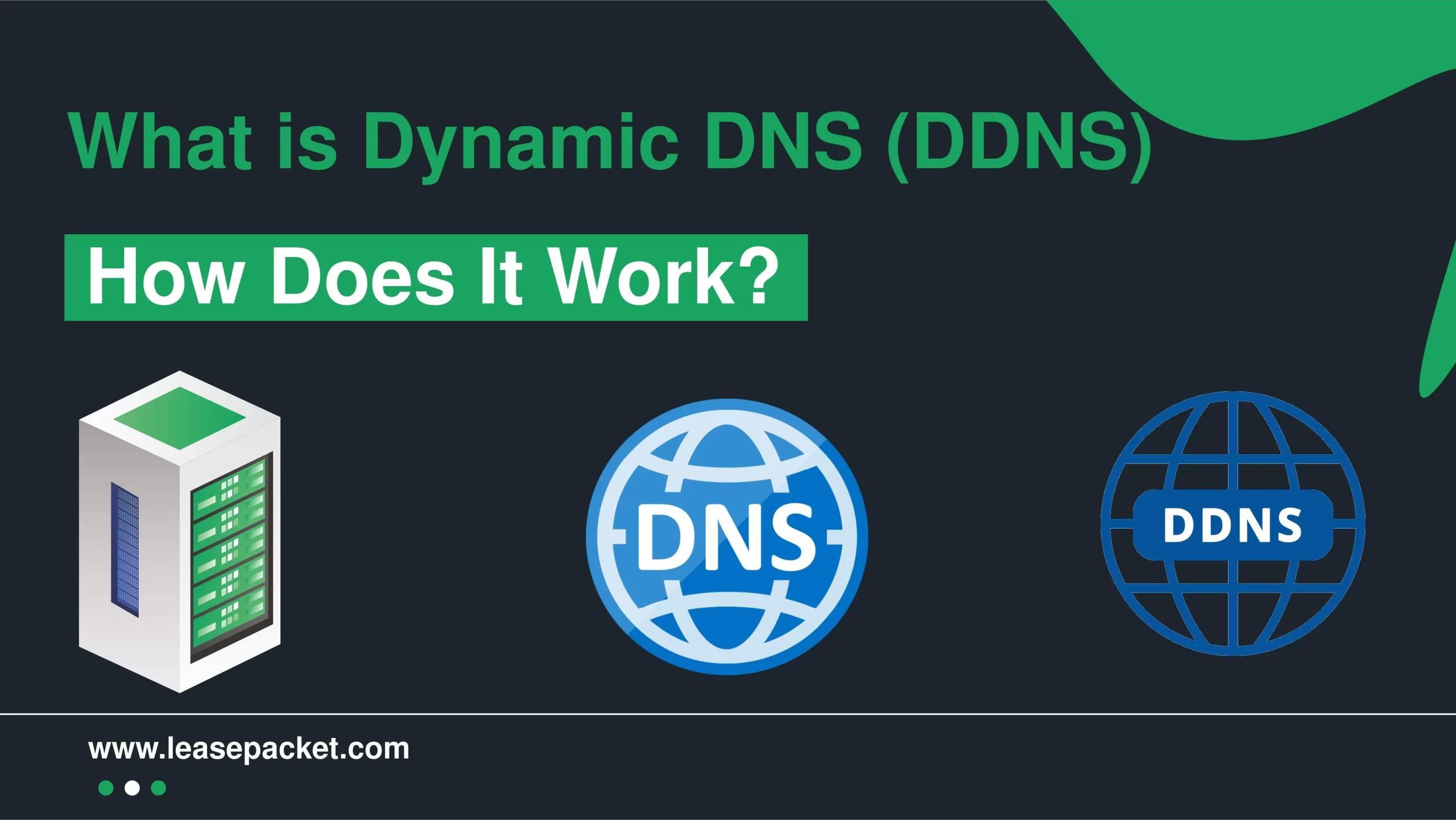In today’s interconnected world, remotely accessing devices has become essential. From checking in on your home security camera to connecting to your company’s network from afar, establishing a fast & hassle-free connection is crucial. However, there’s a challenge – the ever-changing nature of IP addresses. Here comes Dynamic DNS (DDNS), a clever solution that helps this connection happen. In this article, we will delve into the world of DDNS to answer the popular question of what is DDNS? Its importance, functionality, and real-world applications. From understanding the basics to uncovering its numerous benefits, we will also try to understand the complexities of DDNS in simple terms. Once the article is completed, you must know how DDNS simplifies remote access and enhances connectivity in our digital age.
Table of Contents
What is DDNS?
In simple words, DDNS is a system that automatically updates the DNS (Domain Name System) records in real-time when the IP address of a device changes. Straightforwardly, DDNS is a method that allows you to connect to a device with a changing IP address using a consistent domain name.
Let’s understand this using some examples:
Imagine your device, like a security camera or a home server, having a phone number. But unlike a phone number that stays the same, your device’s “number,” called an IP address, can change, especially if you’re using a regular internet connection. So, DDNS solves this by linking a stable, easy-to-remember name (like myhome.ddns.net) to your device – now, even if the IP address changes, this name remains the same. It’s like having a personal secretary who updates your contact information whenever you move. This way, you can access your devices anywhere, anytime, without trouble.
How Does Dynamic DNS Work?
DDNS uses client software or hardware installed on the user’s network. This client continuously monitors the device’s IP address and communicates changes to the DDNS provider’s servers. The DDNS provider then updates the DNS records, associating the device’s domain name with its current IP address. When a user tries to access the device using its domain name, the DNS system routes the request to the correct IP address, allowing smooth connectivity.
Types of DDNS
Various dynamic DNS services are available, ranging from free to paid options. Free dynamic DNS services usually come with limitations on the number of domains or updates allowed – while paid services offer more features and support.
The other two main types of DDNS include:
1. Standards-Based DDNS
A DDNS adheres to established industry protocols & specifications to ensure compatibility across different platforms & devices.
2. Proprietary DDNS
A dynamic DNS solution developed & owned by a specific company, often tailored to their services, potentially offering unique features but with limited interoperability.
Benefits of Dynamic DNS
Dynamic DNS offers several benefits, including:
1. Remote Access: It allows users to remotely access devices, such as home servers or security cameras, using a consistent domain name, regardless of the changing IP address.
2. Reliability: By automatically updating DNS records, DDNS ensures that devices remain accessible even when their IP addresses change frequently.
3. Cost-Effectiveness: Many DDNS services offer unpaid or affordable plans – making it a cost-effective solution for individuals and small businesses.
4. Ease of Use: Dynamic DNS services typically offer user-friendly interfaces and setup processes, making it easy for non-technical users to configure and manage.
What are the use cases for dynamic DNS?
Dynamic DNS is commonly used in various scenarios, including:
1. Remote Access to Home Devices: Users can access home servers, security cameras, or other IoT (Internet of Things) devices from anywhere using a consistent domain name.
2. Remote Access to Business Networks: Dynamic DNS enables employees to connect to their company’s network remotely, enhancing flexibility and productivity.
3. Web Hosting: DDNS can host websites on servers with dynamic IP addresses to ensure continuous accessibility.
4. Gaming: Gamers often use dynamic DNS to host game servers, allowing friends to connect and play together.
What is the difference between DNS & Dynamic DNS?
The primary difference between DNS & Dynamic DNS lies in their functionality and purpose. DNS is a system that translates domain names into IP addresses – allowing users to access websites and other internet services using human-readable names. It provides a static mapping between domain names & IP addresses, meaning that the mappings are typically configured manually and do not change frequently.
Dynamic DNS, on the other hand, is specifically designed to handle situations where the IP addresses of devices may change frequently. It automatically updates DNS records in real time to ensure that devices remain accessible using consistent domain names, regardless of changes to their IP addresses.
In essence, DNS provides the foundational infrastructure for mapping domain names to IP addresses – while Dynamic DNS adds the capability to update these mappings dynamically.
Conclusion
Dynamic DNS is a valuable technology that enables users to access devices with changing IP addresses using consistent domain names. It offers numerous benefits, including remote access, reliability, cost-effectiveness, and ease of use. Whether for accessing home devices, remote business networks, web hosting, or gaming – dynamic DNS plays a crucial role in ensuring fast connectivity. By automatically updating DNS records, DDNS simplifies accessing devices remotely and enhances the overall user experience. If you have more queries regarding DDNS or how to get DDNS – you can connect with top server providers like Leasepacket.
FAQs
Q1. What devices can benefit from DDNS?
Any device with a changing IP address, such as security cameras, home servers, or gaming consoles, can benefit from DDNS.
Q2. How does DDNS update IP addresses?
DDNS continuously monitors the device’s IP address and communicates changes to the DDNS provider’s servers, which then update the DNS records accordingly.
Q3. Is DDNS free to use?
Some DDNS services offer free plans with limited features – while others may require a subscription fee for additional features or support.
Q4. Can I use DDNS for remote access to my business network?
Yes! DDNS enables employees to connect to their company’s network remotely, enhancing flexibility & productivity.
Q5. Do I need technical expertise to set up DDNS?
No! Many DDNS services offer user-friendly interfaces and setup processes, making it accessible even for non-technical users.
Q6. Is DDNS secure?
While DDNS doesn’t provide security features, using HTTPS connections and strong passwords can enhance security when accessing devices remotely.

























